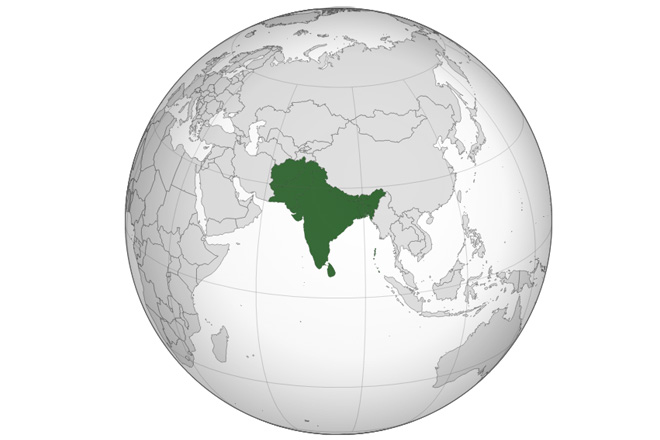By CECILE FRUMAN , JOHN ROOME & PAWAN PATIL
Collaboration, cooperation, consensus – these words are seldom used when describing the interactions of the eight sovereign nations that make up South Asia. For a variety of reasons, South Asia is considered the least integrated region in the world with restrictions on the movement of people, goods, services and capital.
Yet, Afghanistan, Bangladesh, Bhutan, India, Maldives, Nepal, Pakistan and Sri Lanka have quietly embarked on a journey together, unparalleled globally, to rid their nations and the region of marine plastic pollution . When asked for its support, the World Bank’s response was a resounding “Yes”.
Before the pandemic, over 46,000 pieces (269,000 tons) of plastic polluted one square mile of the Indian Ocean on average. An estimated 5.2 trillion pieces of plastic are already polluting our ocean, with an additional 8 million tons entering each year—a garbage truck worth of plastic every minute.
COVID-19 has exacerbated the problem of plastic pollution, with increased demand for single-use plastic and pressure on solid waste management systems , accompanied by an increase in single-use disposable plastic because of hygiene concerns and low prices of virgin plastics.
The scientific journal Environmental Sciences & Technology estimates that globally, 129 billion disposable face masks and 65 billion throw-away gloves are being used every month during the pandemic. Sadly, most, is ending up in the natural environment.
Five main factors are driving the countries of South Asia to cooperate on this issue:
First, plastic pollution across South Asia has reached a tipping point and can no longer be ignored. South Asia leads the world in open dumping of plastic and all waste with 75% of South Asia’s 334 million metric tons per year openly dumped ; 12% of this—40 million metric tons per year (MMTY) —is plastic. Without action, South Asia will double its mismanaged waste to 661 MMTY by 2050, earning the unwanted distinction of owning the fastest growth of waste and plastic pollution of all regions of the world, according to the World Bank’s What A Waste 2.0 report.
Second, plastic pollution ranks as the number one environmental concern across Asia and among the top three globally. Plastic, a modern invention made from fossil fuel-based petrochemicals like petroleum, is polluting our air, littering land, clogging urban sewers and major rivers, and dumped at sea. Plastic pollution threatens both human and ocean health, with direct and indirect negative impacts on national, regional and global economies estimated at over US$2.5 trillion per year . It adversely affects citizens across the region irrespective of socio-economic status, but disproportionately impacts the poor.
Third, plastic pollution is both a national problem and transboundary in nature, thus binding mountain and ocean economies together. Microplastic particles are found in abundance throughout the uppermost reaches of South Asia’s highest snow-capped mountains like Mount Everest to the deepest parts of the Indian Ocean. And, the region’s two transboundary river systems—the Indus River System connecting Afghanistan, India and Pakistan and the Ganga-Brahmaputra-Meghna River System connecting Bhutan, Nepal, India and Bangladesh—are among the top five most polluting in the world. They have become the express highway for plastic pollution transfer from land to ocean.
Fourth, well-intended single-use plastic ban policies from as early as the 1980s have failed; Steps are underway to solve this problem. South Asian nations are pioneers globally in introducing bans of single-use plastic in national and sub-national jurisdictions: The Indian State of Sikkim in 1998, a global first, followed by Bangladesh in 2002, Bhutan in 2005, Afghanistan, Nepal and Sri Lanka in 2011, Pakistan in 2013 and Maldives in 2016. Yet implementation of these bans has not yielded the desired results – a decrease in the use of single-use plastics. In fact, its rise has been exponential.
Fifth, all eight South Asian nations recognized that co-creating a regional organization with an environmental focus could support cohesion across the region. The South Asia Cooperative Environment Programme (SACEP), a regional organization established in 1982 with membership of Afghanistan, Bangladesh, Bhutan, India, Maldives, Nepal, Pakistan and Sri Lanka – and based in Colombo, has sustained an active convening role across member-states on environmental issues, including most recently, on mitigating plastic pollution that flows into the region’s seas. Over the past several years, SACEP, has actively conducted consultations with its member-states, preparing a world’s first regional marine litter action plan (endorsed by all ocean-facing South Asian nations) and a regional solid waste management action plan (endorsed by both mountain and ocean facing nations of the region).
There is no silver bullet to solve marine plastic pollution and interventions are needed at every stage of the plastic lifecycle, from production to stopping plastic leakage through investments in solid waste management, to transitioning to a circular economy approach for plastics .
All eight South Asian countries have recognized the problem and seek solutions. This is why the World Bank worked closely with SACEP and Parley for the Oceans to develop and launch the Bank’s first-ever regional project to address the problem of plastic pollution, Plastic free Rivers and Seas for South Asia, which is working to curb marine plastic pollution and ramp up eco-innovations to reinvent plastic use and production.
The climate for cooperation across South Asia to address this transboundary threat to economies and livelihoods has never been better. Now is the time to push for new policies, investments and innovations and for behavior change by both consumers and industry. The journey has begun.

